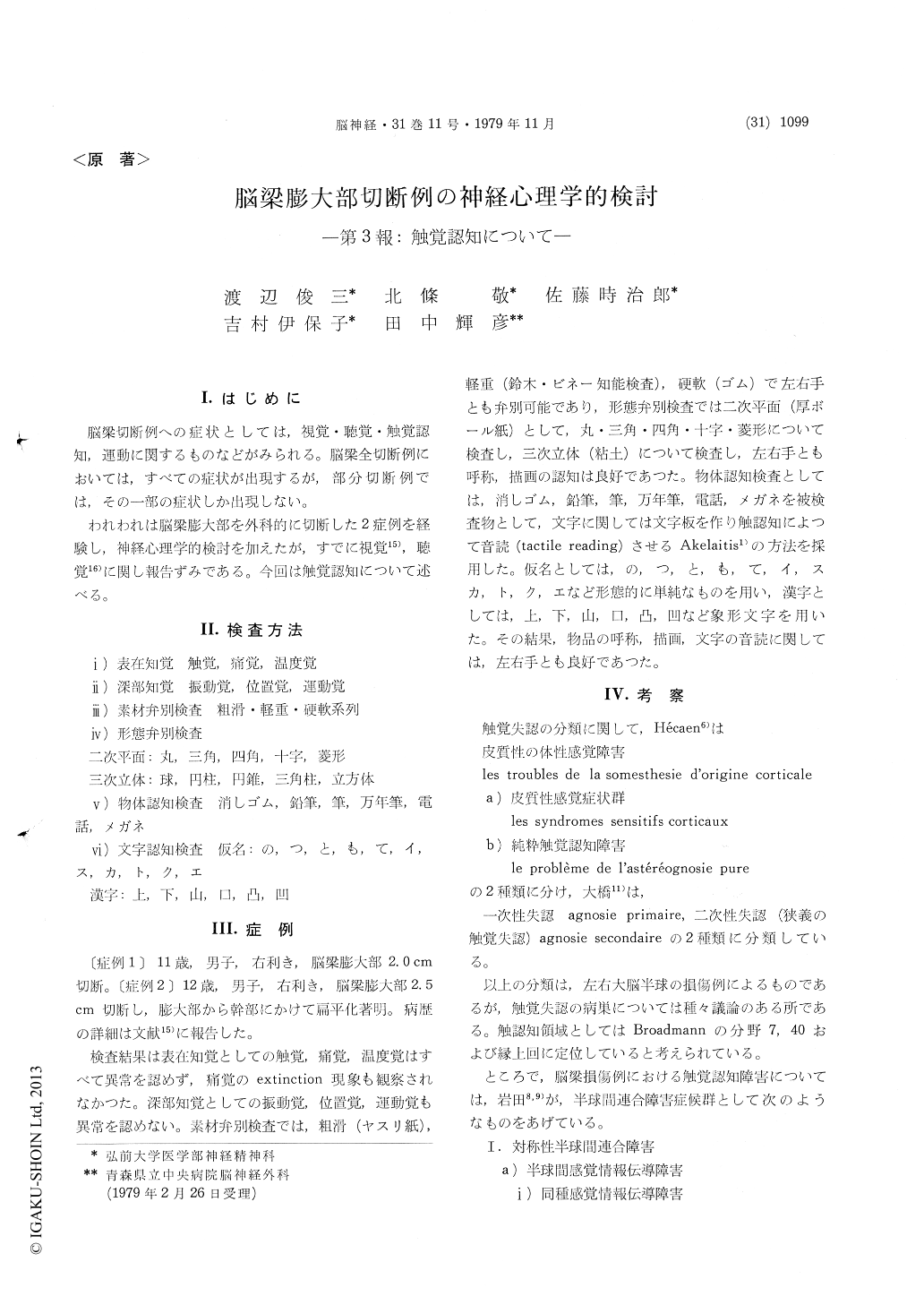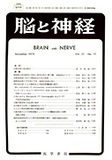Japanese
English
- 有料閲覧
- Abstract 文献概要
- 1ページ目 Look Inside
I.はじめに
脳梁切断例への症状としては,視覚・聴覚・触覚認知,運動に関するものなどがみられる。脳梁全切断例においては,すべての症状が出現するが,部分切断例では,その一部の症状しか出現しない。
われわれは脳梁膨大部を外科的に切断した2症例を経験し,神経心理学的検討を加えたが,すでに視覚15),聴覚16)に関し報告ずみである。今回は触覚認知について述べる。
We made the neuropsychological tactile studies of two right-handed subjects who had undergonethe transection of the splenium of the corpus cal-losum for the pineal operation (the teratoma by the histopathological examination). The transac-tion grade was 2.0 cm and 2.5 cm.
In this paper we examined the tactile recognition neuropsychologically
A. Superficial sensory modalities: light touch, pain perception, temperature discriminations
B. Deep sensory modalities: vibration percep-tion, position sense, motor sense
C. Perception of material: rough or smooth, heavy or light, hard or soft
D. Perception of size: appreciation of shape in two dimentions : circle, triangle, square, cross, rhomb, appreciation of form in three dimensions : ball, column, cone, trignonal prism, cube
E. identification of simple objects: eraser, pencil, hair pencil, fountainpen, telephone, glasses
F. identification of japanese letters: Kana (pho-netic symbols) and Kanji (essentially nonphonetic logographic symbols representing lexical morphe-mes)
According to the papers of Akelaitis, Van Vleuten, Goldstein, the subjects after the transection of the corpus callosum could name the objects and the card boad letters placed in their right hands with their eyes closed, but they could not name in their left hand by contrast.
In our subjects, the identification of simple ob-jects and the identification of japanese letters were complete good. But they had the neuropsychological visual and auditive disorders.
The result shows that the commissure fibres of the identification of the simple objects and letters of two hemispheres does not connect through the splenium of the corpus callosum.

Copyright © 1979, Igaku-Shoin Ltd. All rights reserved.


